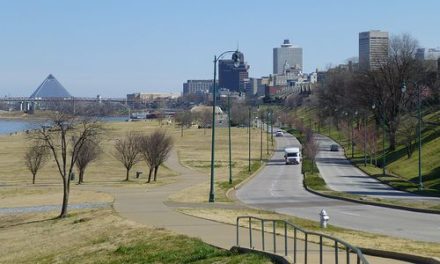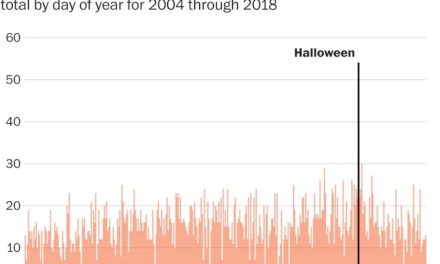From CityLab:
In the past few years, a remarkable body of scientific research has begun to shed new light on the dynamic behavior of cities, carrying important implications for city-makers. Researchers at cutting-edge hubs of urban theory like the University College London and the Santa Fe Institute have been homing in on some key properties of urban systems—and contradicting much of today’s orthodoxy. Their findings have begun to feed into recent and upcoming gatherings on the future of cities—including lead-in events for the U.N.’s big 2016 Habitat III conference on sustainable development—and arming leaders in the field with new ammunition in the global battle against sprawl.
In one sense, these lessons are not so new. Legendary urbanist Jane Jacobs was famous for her prescient insights about the emerging sciences of “organized complexity” and what they offered for a more effective approach to urban planning—insights she published all the way back in 1961. (In fact, physicist Geoffrey West of the Santa Fe Institute likes to say they are just doing “Jacobs with the math.”)
Jacobs was also famous for excoriating the backward-looking “pseudo-science” of that era’s planning and architecture, which she said seemed “almost neurotic in its determination to imitate empiric failure and ignore empiric success.” She urged city-makers to understand the real “kind of problem a city is”—not a conventional problem of top-down mechanical or visual order, but a complex problem of interacting factors that are “interrelated into an organic whole.” She urged planners and architects to show greater respect for the intrinsic order of cities, and to apply the best insights of the new sciences, coupled with the most pragmatic methods.
Today, in an age of rapid urbanization and growing urban challenges, that advice could not be more timely. In many ways, the new findings confirm and extend Jacobs’ original insights. Here are five of the most significant:
Cities generate economic growth through networks of proximity, casual encounters and “economic spillovers.” The phenomenal creativity and prosperity of cities like New York is now understood as a dynamic interaction between web-like networks of individuals who exchange knowledge and information about creative ideas and opportunities. Many of these interactions are casual, and occur in networks of public and semi-public spaces—the urban web of sidewalks, plazas, and cafes. More formal and electronic connections supplement, but do not replace, this primary network of spatial exchange.
Through a similar dynamic, cities generate a remarkably large “green dividend.” It has long been known that cities have dramatically lower energy and resource consumption as well as greenhouse gas emissions per capita, relative to other kinds of settlements. Only some of this efficiency can be explained by more efficient transportation. It now appears that a similar network dynamic provides a synergistic effect for resource use and emissions—what have been called “resource spillovers.” Research is continuing in this promising field.
Cities perform best economically and environmentally when they feature pervasive human-scale connectivity. Like any network, cities benefit geometrically from their number of functional interconnections. To the extent that some urban populations are excluded or isolated, a city will under-perform economically and environmentally. Similarly, to the extent that the city’s urban fabric is fragmented, car-dependent or otherwise restrictive of casual encounters and spillovers, that city will under-perform—or require an unsustainable injection of resources to compensate. As Jacobs said, lowly appearing encounters on sidewalks and in other public spaces are the “small change” by which the wealth of a city grows.
Cities perform best when they adapt to human psychological dynamics and patterns of activity. Urban residents have a basic need to make sense of their environments, and to find meaning and value in them. But this issue is not as straightforward as it may appear. Research in environmental psychology, public health and other fields suggests that some common attributes promote the capacity to meet these human requirements—among them green vegetation, layering, and coherent grouping. Wayfinding and identity are also promoted by iconic structures, and meaning is enriched by art. But for most people most of the time, evolutionary psychology is a more immediate factor to be accommodated. As Jacobs cautioned, a city is not primarily a work of art. That way of thinking is bad for cities—and probably bad for art too.
Cities perform best when they offer some control of spatial structure to residents. We all need varying degrees of public and private space, and we need to control those variations at different times of the day, and over the span of our lives. In the shortest time frames, we can open or close windows and doors, draw blinds, come out onto porches and informally colonize public spaces, or retreat inside the privacy of our homes. Over longer time frames, we can remodel our spaces, open businesses, build buildings, and make other alterations that gradually form the complex dynamic growth of cities.
These examples illustrate that cities are complex, adaptive systems with their own characteristic dynamics, and—if they are going to perform well from a human point of view—they need to be dealt with as such. In that light we must re-assess our current systems of planning, building and managing cities—the laws, codes, standards, models, incentives, and disincentives that effectively make up the “operating system” for urban growth. To make better cities, we need to shift to an evidence-based approach, able to draw on the best lessons of science and history about the making of good cities, from a human point of view.
But this is far from conventional urban practice, which too often features an art-dominated approach to architecture that values novel visual imagery over enduring human city-making. At its worst, this approach is little more than a kind of marketing package over a still-prevailing mechanical approach to cities: a focus on objects, a promotion of segregated campuses, superblocks, and malls, and an over-reliance on isolating, high-resource consumption systems like personal automobile transportation. These negative practices are still alarmingly commonplace in rapidly urbanizing parts of the developing world today.
The stakes for reform could not be higher. Over the next five decades, if present trends do not reverse dramatically, humanity is set to create more sheer volume of urban settlement than it has in the entire previous history of human settlement. The implications are nothing short of alarming for the Earth’s ecology, for the viability of future economies, and for the future quality of human life. We desperately need tools to understand the likely effects, and to guide us in making the changes needed—professionally, politically and economically—to avert future catastrophe.
It seems that humanity now faces a watershed challenge: to find a new basis to generate creative economies and quality of life, without destroying the resources on which life ultimately depends. If we do not do so, we are likely to enter an era of unprecedented human misery. In this challenge, cities will be enormous contributors to the problem. Or, if we understand the lessons from the emerging science of cities about cities’ dynamic capacity to promote creative growth while reducing resource destruction—and perhaps even offering the promise of regeneration—they can be enormous contributors to the solution.




